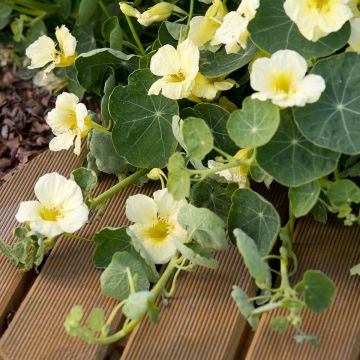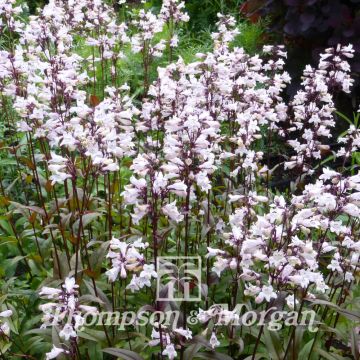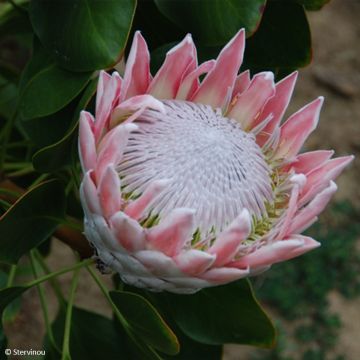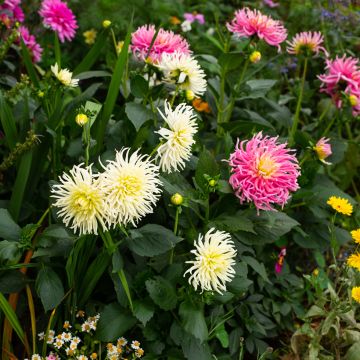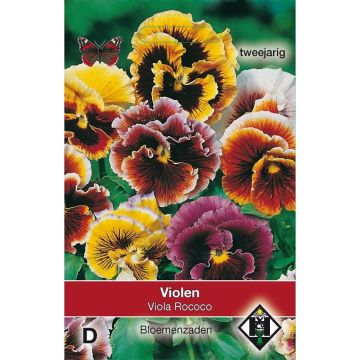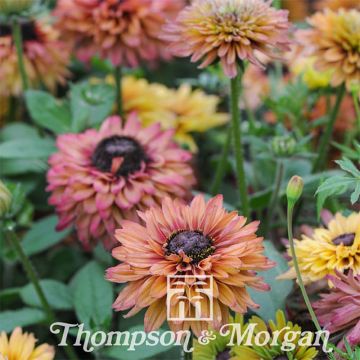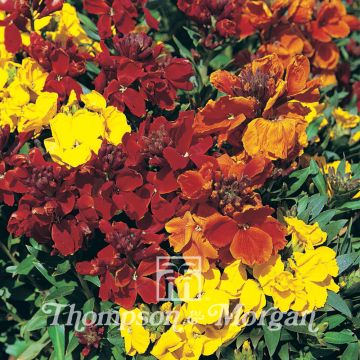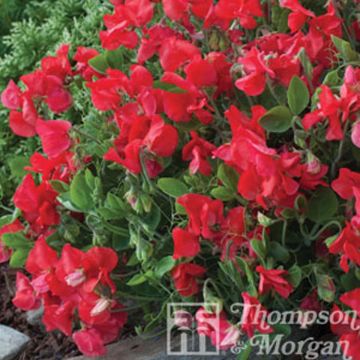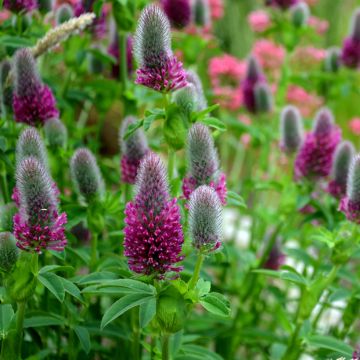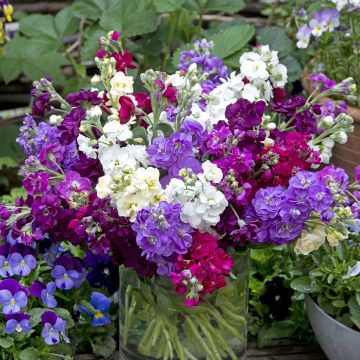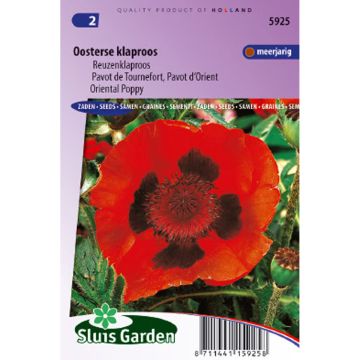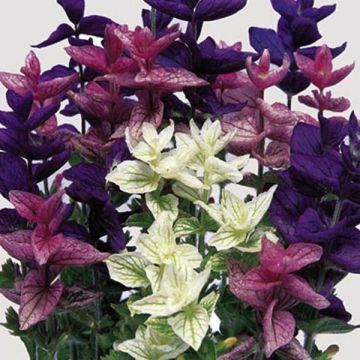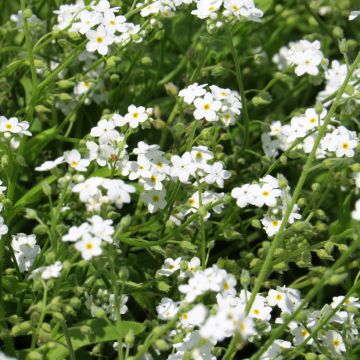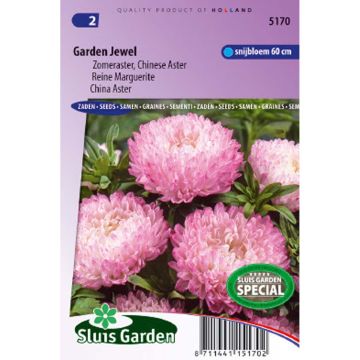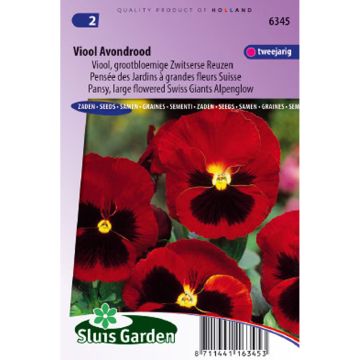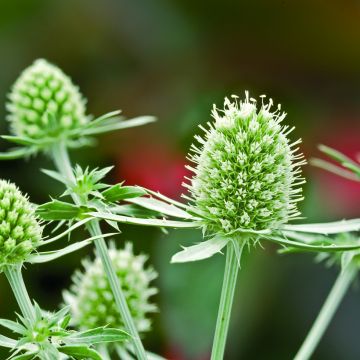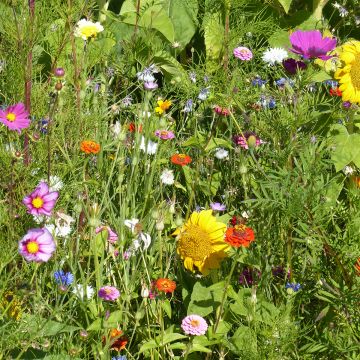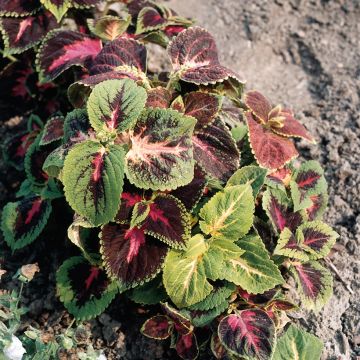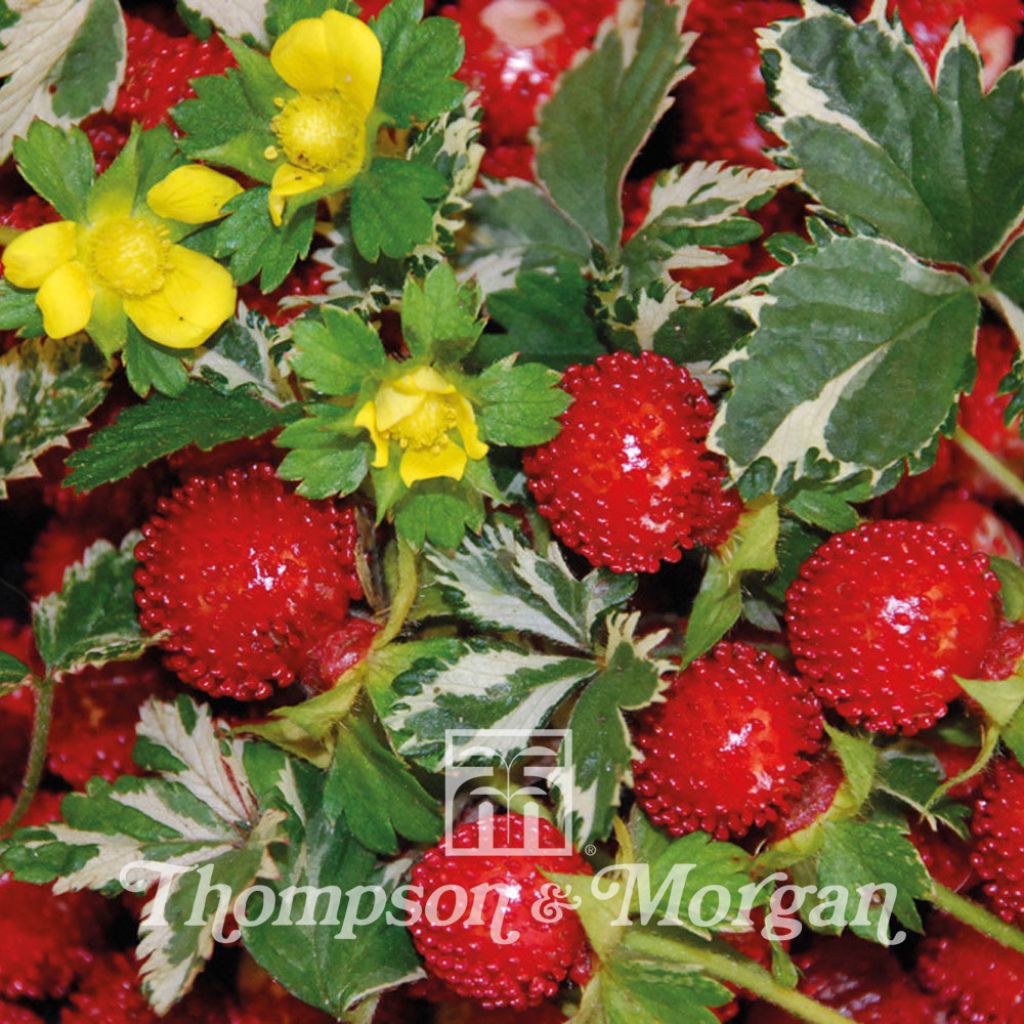

Duchesnea Indica Harlequin
Duchesnea indica Harlequin - Indian Strawberry seeds
Duchesnea indica Harlequin
Indian Strawberry, False Straswberry
Order in the next for dispatch today!
Dispatch by letter from €3.90.
Delivery charge from €5.90 Oversize package delivery charge from €6.90.
Current delivery delay: 2 days.
More information
This item is not available in your country.
Schedule delivery date,
and select date in basket
This plant carries a 6 months recovery warranty
More information
We guarantee the quality of our plants for a full growing cycle, and will replace at our expense any plant that fails to recover under normal climatic and planting conditions.
Seed-only orders are dispatched by sealed envelope. The delivery charge for seed-only orders is €3.90.
Does this plant fit my garden?
Set up your Plantfit profile →
Description
Duchesnea indica 'Harlequin', also known as Fragaria indica 'Harlequin' or Indian Strawberry, is an adorable small semi-evergreen perennial plant with a creeping and stoloniferous growth habit and dentate leaves variegated with cream. It blooms in spring and early summer with yellow strawberry-like flowers soon followed by ornamental red fruits, resembling wild strawberries but without the flavour. Perfect for containers or hanging baskets, it will quickly cascade between rocks in rockeries and make a good fast-growing ground cover. Not demanding on soil quality, this plant thrives in partial shade.
Duchesnea or Potentilla indica is a stoloniferous plant from the rose family native to Asia. In its country of origin, it colonizes riverbanks and damp woodlands. Introduced to Europe long ago, this small false strawberry has become sometimes invasive, to the point of outcompeting our wild woodland strawberry.The 'Harlequin' variety forms 10cm (3.9in) tall mats, spreading rapidly thanks to stoloniferous stems forming rosettes and rooting upon contact with the ground. Its semi-evergreen leaves are divided into 3 to 5 toothed leaflets, their dark green colour is variegated with white-cream. Flowering occurs from April to June. The foliage is adorned with small yellow strawberry-like flowers, which are accompanied by red fruits when ripe, resembling wild strawberries. However, they are upright while the wild strawberry hangs on its peduncle. These fruits are edible, relatively dry, and have an unpleasant taste, far from the flavour of our wild fruits.
Report an error about the product description
Flowering
Foliage
Plant habit
Botanical data
Duchesnea
indica
Harlequin
Rosaceae
Indian Strawberry, False Straswberry
Cultivar or hybrid
Other Thompson and Morgan seeds
Planting and care
Sow the seeds of Indian strawberry from February to May. Sow on the surface of a good moist compost, in pots or trays and lightly cover with compost or vermiculite. Enclose the sowings in a polythene bag and keep them at a temperature of 15-18°C. Keep in light, as it promotes germination. Keep the surface of the compost moist but not waterlogged; germination usually takes 21 to 30 days.
When the young plants are large enough to handle, transplant them into 7.5cm (2.8in) diameter pots or trays. Gradually acclimatize them to cooler conditions for a few weeks before planting out after all risk of frost, spacing them 30cm (11.8in) apart.
cultivation:
Sowing period
Intended location
This item has not been reviewed yet - be the first to leave a review about it.
Flower seeds
Haven't found what you were looking for?
Hardiness is the lowest winter temperature a plant can endure without suffering serious damage or even dying. However, hardiness is affected by location (a sheltered area, such as a patio), protection (winter cover) and soil type (hardiness is improved by well-drained soil).

Photo Sharing Terms & Conditions
In order to encourage gardeners to interact and share their experiences, Promesse de fleurs offers various media enabling content to be uploaded onto its Site - in particular via the ‘Photo sharing’ module.
The User agrees to refrain from:
- Posting any content that is illegal, prejudicial, insulting, racist, inciteful to hatred, revisionist, contrary to public decency, that infringes on privacy or on the privacy rights of third parties, in particular the publicity rights of persons and goods, intellectual property rights, or the right to privacy.
- Submitting content on behalf of a third party;
- Impersonate the identity of a third party and/or publish any personal information about a third party;
In general, the User undertakes to refrain from any unethical behaviour.
All Content (in particular text, comments, files, images, photos, videos, creative works, etc.), which may be subject to property or intellectual property rights, image or other private rights, shall remain the property of the User, subject to the limited rights granted by the terms of the licence granted by Promesse de fleurs as stated below. Users are at liberty to publish or not to publish such Content on the Site, notably via the ‘Photo Sharing’ facility, and accept that this Content shall be made public and freely accessible, notably on the Internet.
Users further acknowledge, undertake to have ,and guarantee that they hold all necessary rights and permissions to publish such material on the Site, in particular with regard to the legislation in force pertaining to any privacy, property, intellectual property, image, or contractual rights, or rights of any other nature. By publishing such Content on the Site, Users acknowledge accepting full liability as publishers of the Content within the meaning of the law, and grant Promesse de fleurs, free of charge, an inclusive, worldwide licence for the said Content for the entire duration of its publication, including all reproduction, representation, up/downloading, displaying, performing, transmission, and storage rights.
Users also grant permission for their name to be linked to the Content and accept that this link may not always be made available.
By engaging in posting material, Users consent to their Content becoming automatically accessible on the Internet, in particular on other sites and/or blogs and/or web pages of the Promesse de fleurs site, including in particular social pages and the Promesse de fleurs catalogue.
Users may secure the removal of entrusted content free of charge by issuing a simple request via our contact form.
The flowering period indicated on our website applies to countries and regions located in USDA zone 8 (France, the United Kingdom, Ireland, the Netherlands, etc.)
It will vary according to where you live:
- In zones 9 to 10 (Italy, Spain, Greece, etc.), flowering will occur about 2 to 4 weeks earlier.
- In zones 6 to 7 (Germany, Poland, Slovenia, and lower mountainous regions), flowering will be delayed by 2 to 3 weeks.
- In zone 5 (Central Europe, Scandinavia), blooming will be delayed by 3 to 5 weeks.
In temperate climates, pruning of spring-flowering shrubs (forsythia, spireas, etc.) should be done just after flowering.
Pruning of summer-flowering shrubs (Indian Lilac, Perovskia, etc.) can be done in winter or spring.
In cold regions as well as with frost-sensitive plants, avoid pruning too early when severe frosts may still occur.
The planting period indicated on our website applies to countries and regions located in USDA zone 8 (France, United Kingdom, Ireland, Netherlands).
It will vary according to where you live:
- In Mediterranean zones (Marseille, Madrid, Milan, etc.), autumn and winter are the best planting periods.
- In continental zones (Strasbourg, Munich, Vienna, etc.), delay planting by 2 to 3 weeks in spring and bring it forward by 2 to 4 weeks in autumn.
- In mountainous regions (the Alps, Pyrenees, Carpathians, etc.), it is best to plant in late spring (May-June) or late summer (August-September).
The harvesting period indicated on our website applies to countries and regions in USDA zone 8 (France, England, Ireland, the Netherlands).
In colder areas (Scandinavia, Poland, Austria...) fruit and vegetable harvests are likely to be delayed by 3-4 weeks.
In warmer areas (Italy, Spain, Greece, etc.), harvesting will probably take place earlier, depending on weather conditions.
The sowing periods indicated on our website apply to countries and regions within USDA Zone 8 (France, UK, Ireland, Netherlands).
In colder areas (Scandinavia, Poland, Austria...), delay any outdoor sowing by 3-4 weeks, or sow under glass.
In warmer climes (Italy, Spain, Greece, etc.), bring outdoor sowing forward by a few weeks.


































